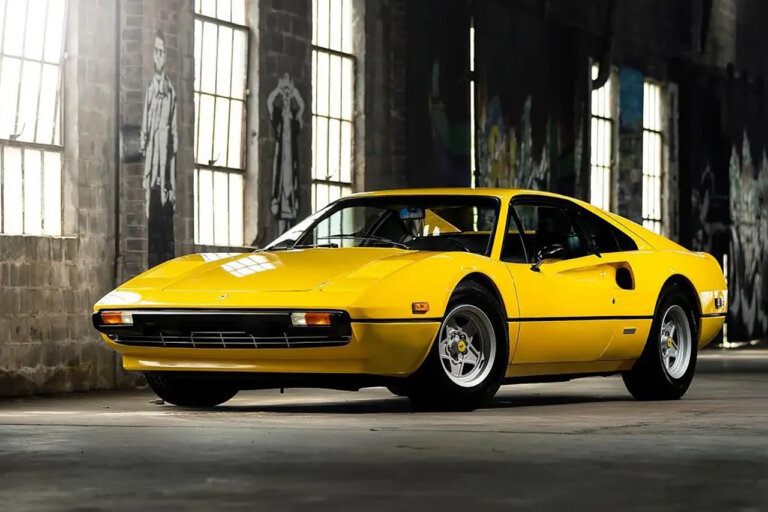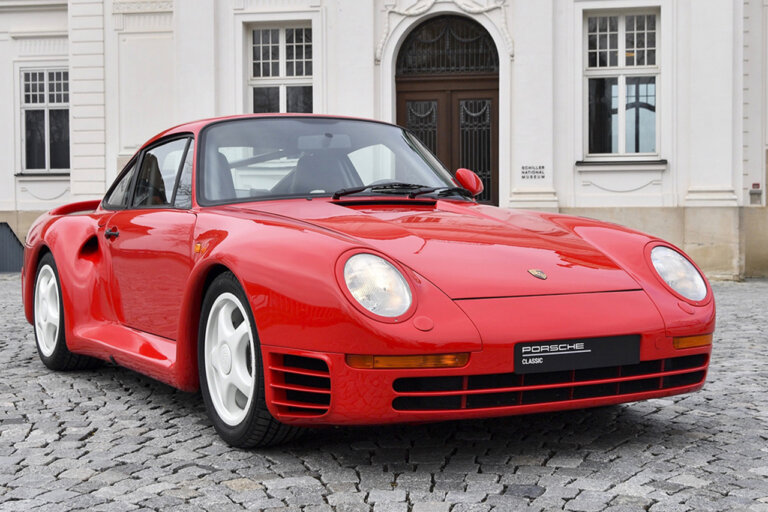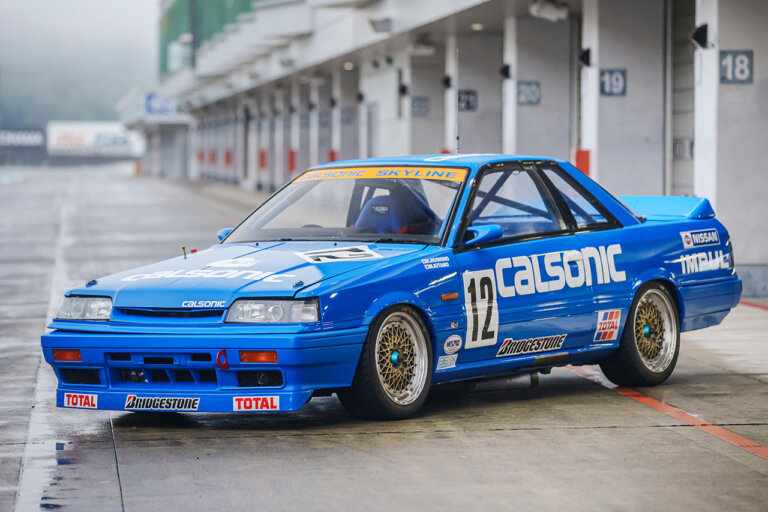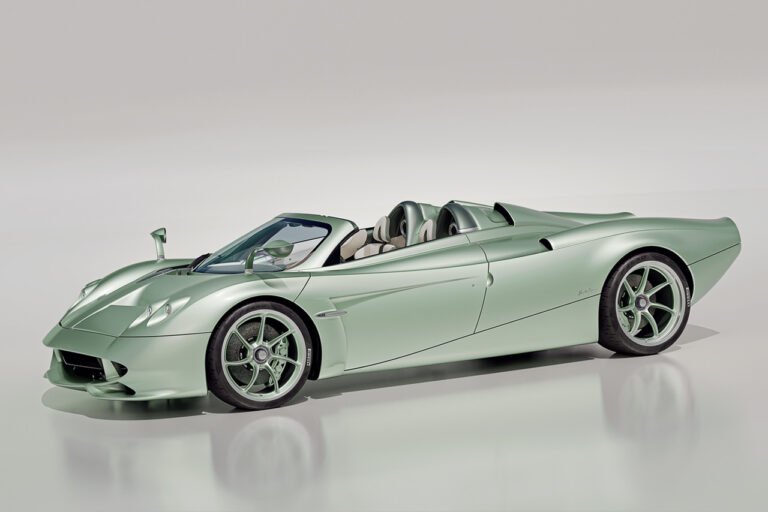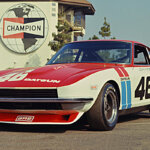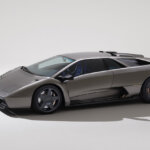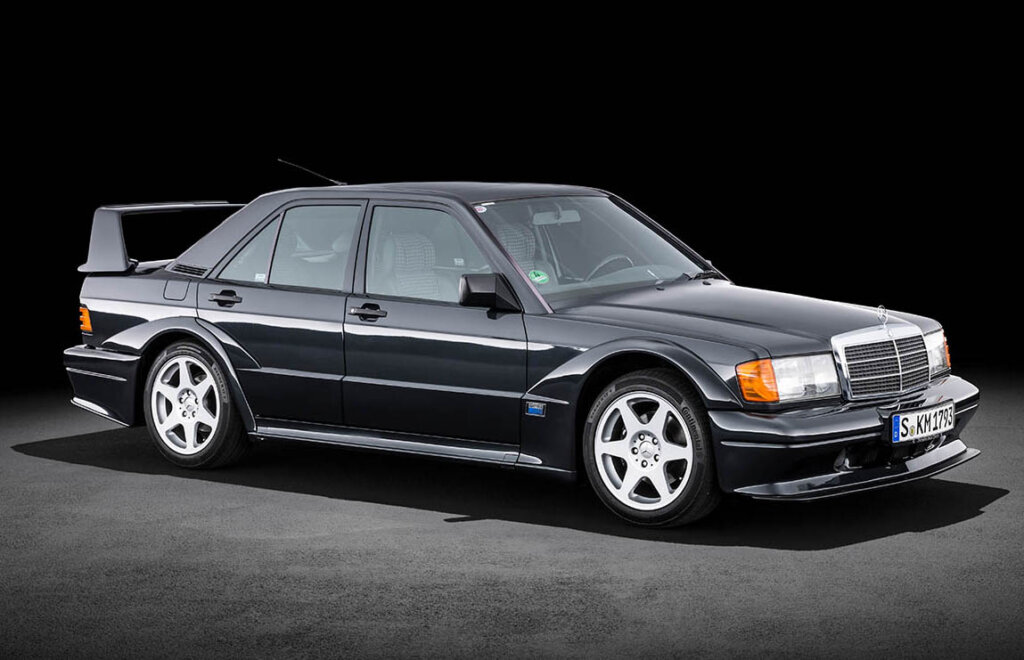
Source: Mercedes-Benz Media Center
| Trim | Production | Engine | Power | Transmission | Drivetrain |
| Evolution I | Mar. 1989 – May 1989 | 2.5L M102 16V I4 | 202 HP / 205 PS / 151 kW | 4-Speed Manual 5-Speed Manual (Optional) | RWD |
| Evolution I | Mar. 1989 – May 1989 | 2.5L M102 16V I4 (PowerPack Upgrade) | 232 HP / 235 PS / 173 kW | 4-Speed Manual 5-Speed Manual (Optional) | RWD |
For more than 90 years, Mercedes-Benz has participated in a diverse array of triumphant motorsport endeavors, spanning sportscar racing, touring car competitions, Grand Prix racing, and rallying. There were numerous models and variants that helped build Mercedes-Benz success in the world of motorsports racing, but no models stood out like the 190 E 2.5-16 Evolution I & II. This high-performance model allowed Mercedes to build their success in motorsports competition during the 1990s.
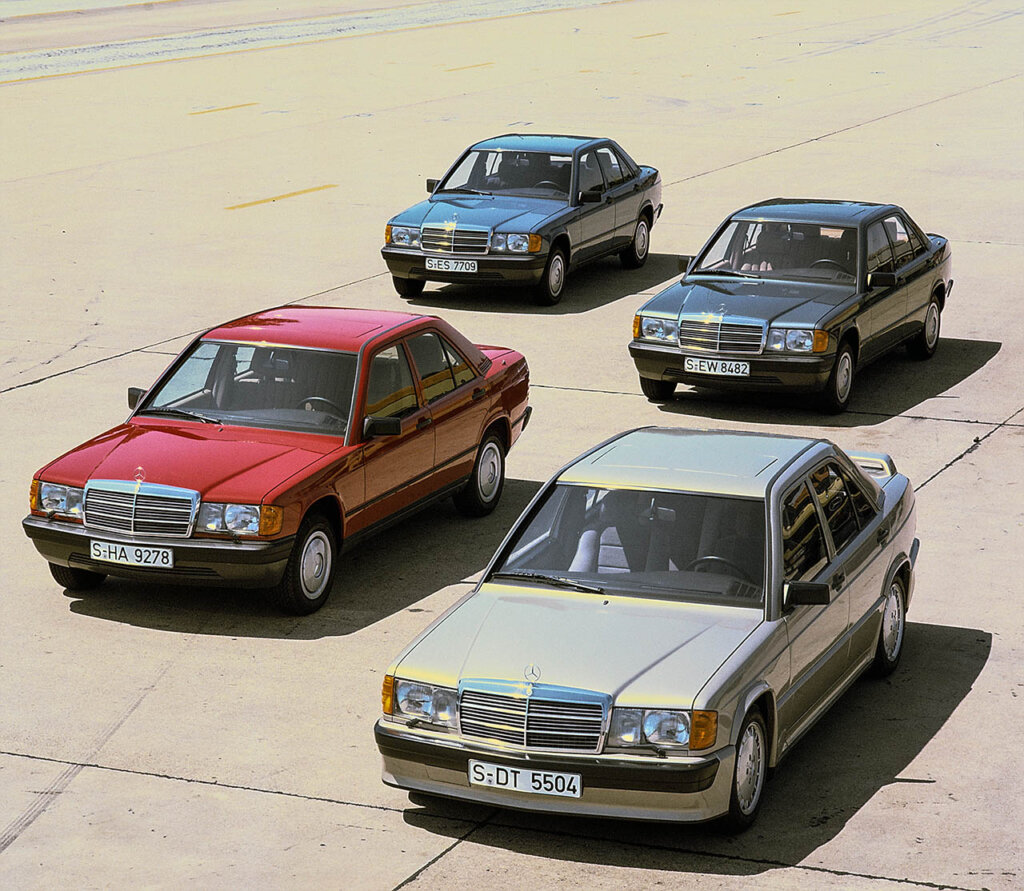
Source: Mercedes-Benz Media Center
Early Rally Performance
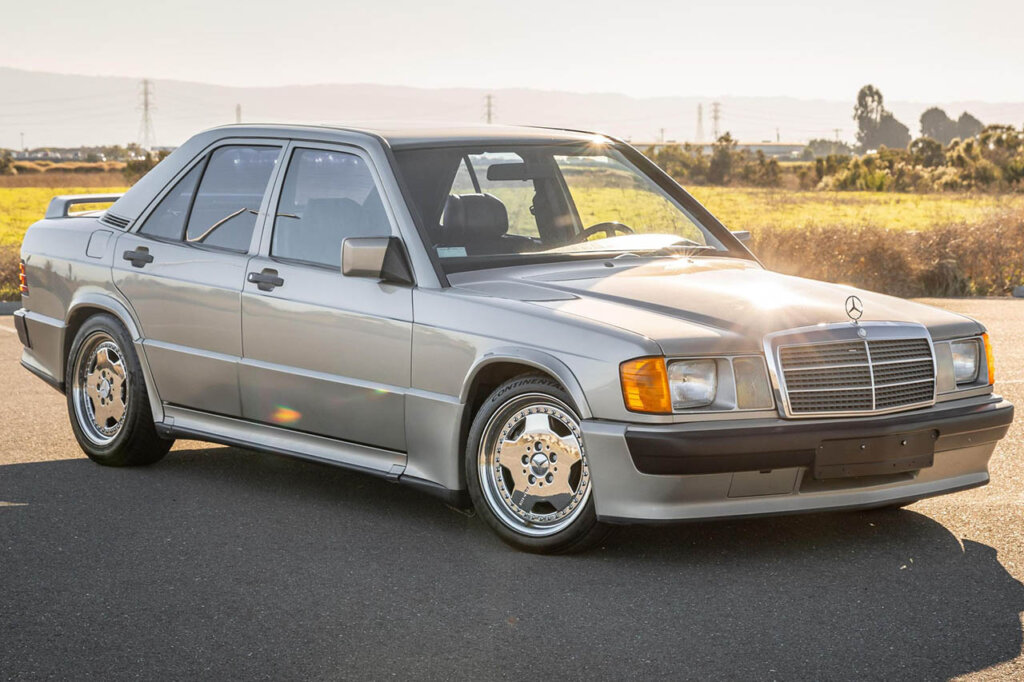
Source: Cars & Bids
During the late 1970s, Mercedes-Benz entered the world of rallying, utilizing their powerful V8 Coupés from the R107 Series, particularly the lightweight Mercedes 450 SLC 5.0. However, the desire to take the 190 E into the rally scene led Mercedes to enlist the expertise of British engineering firm Cosworth. The mission? To develop a formidable rally engine boasting 320 horsepower (239 kW; 324 PS). This ambitious project was known as Project WAA under the guidance of Cosworth. It was during this period that the Audi Quattro, with its revolutionary all-wheel drive system and turbocharged engine, emerged, overshadowing the 2.3-16V.
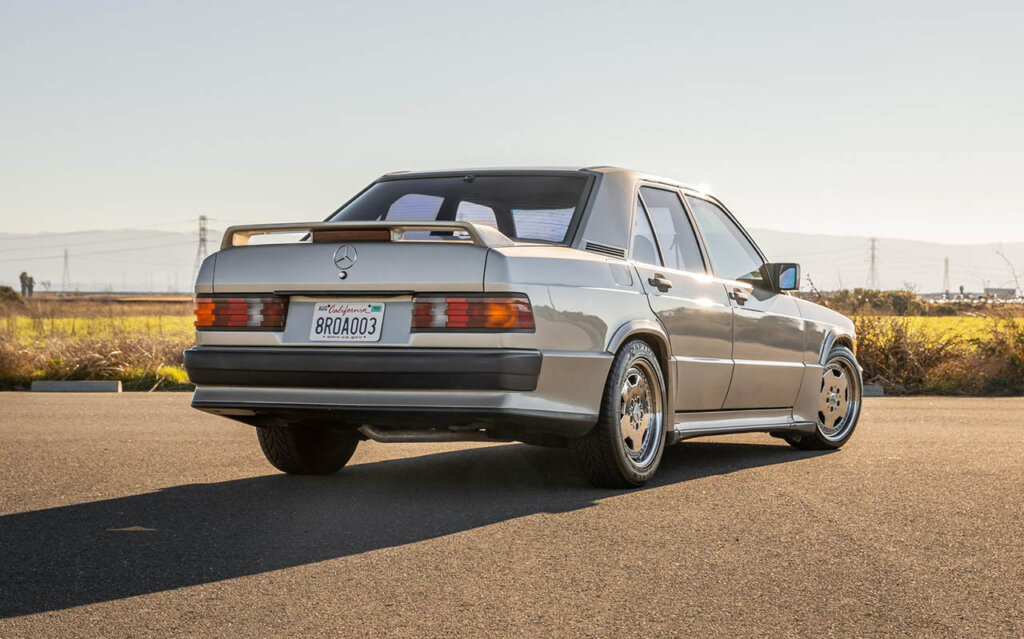
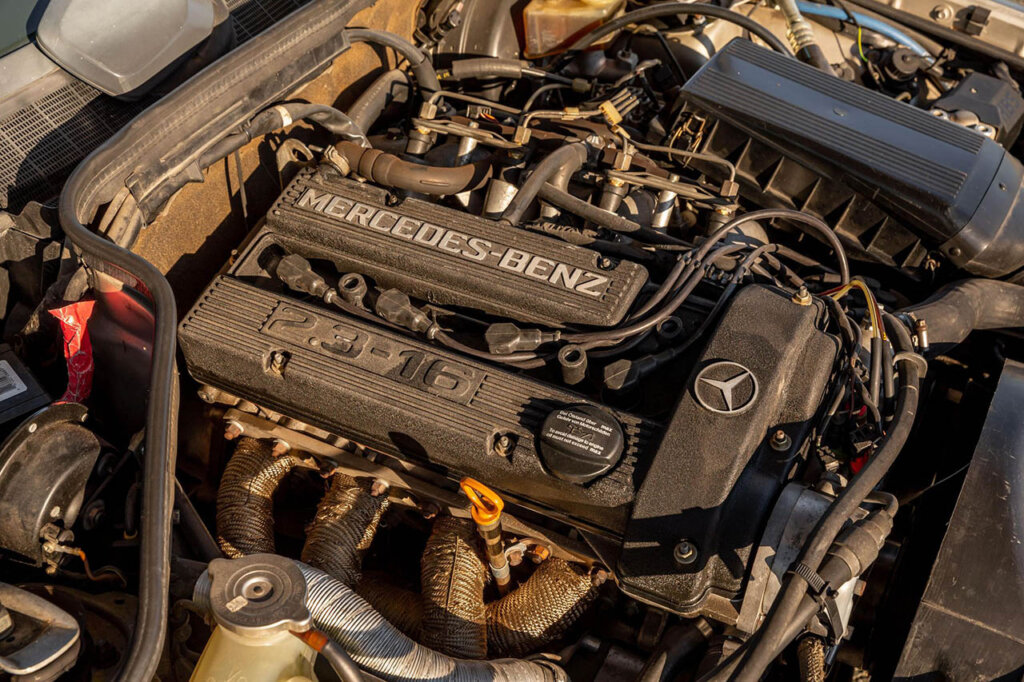
Undeterred by this competition and armed with a potent engine, Mercedes shifted its motorsport focus to the Deutsche Tourenwagen Meisterschaft (DTM) or the German Touring Car Championship. However, DTM regulations required that participating cars be based on roadworthy models. As a result, Mercedes embarked on series production of a 190 model equipped with a slightly detuned Cosworth engine. This high-performance variant was named the 190 E 2.3-16V and made its debut in September 1983 at the Frankfurt Motor Show, already boasting a formidable reputation. Prior to its official launch, three nearly unaltered cars had achieved remarkable feats at the Nardo testing facility in Italy, setting three world records in August. They averaged an impressive speed of 154.06 mph (247.94 km/h) over a grueling 50,000 km endurance test, establishing an impressive twelve international endurance records along the way.
Mercedes 190 E’s Next Evolutionary Step
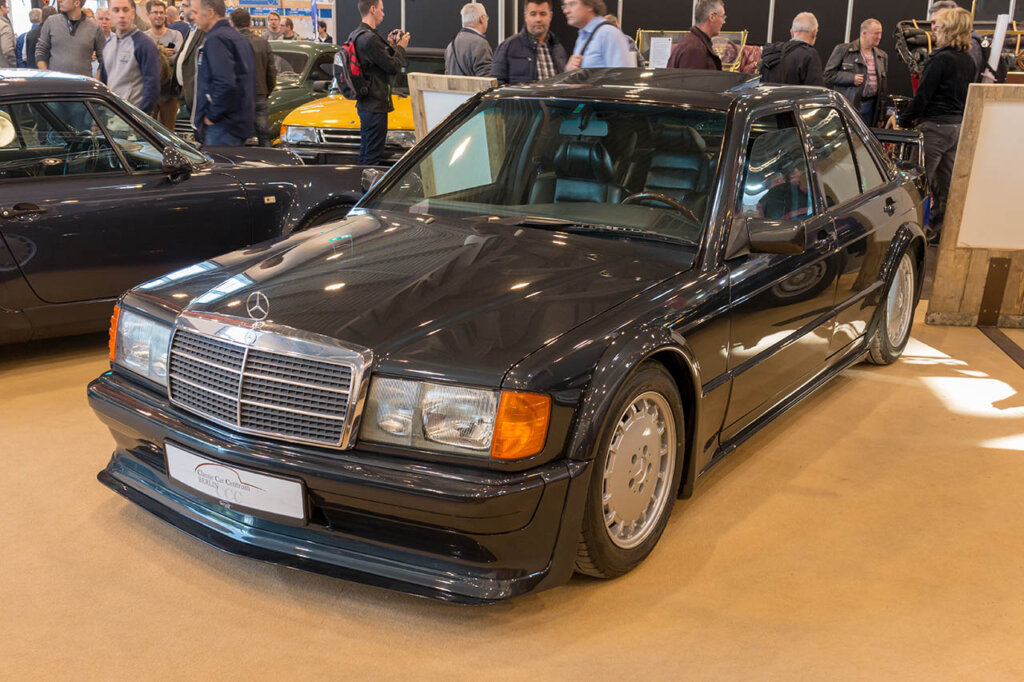
Source: Matti Blume via Wikimedia Commons
Rally competition was getting hotter as BMW introduced their BMW M3 Sport Evolution, the 190 E’s rival. In 1989, Mercedes responded with their own upgraded model to outmatch BMW’s M3 Sport Evolution, with the debut of the 190 E 2.5-16 Evolution. The Evolution, fondly known as the Evo I, underwent a significant transformation, sporting a fresh rear spoiler and broader wheel arches. Beneath its sleek exterior, numerous changes were implemented, delving into the car’s core components like brakes and suspension. One standout feature was the adjustable suspension system, enabling precise ride height adjustments via an interior switch, all meticulously engineered to enhance the Evolution’s track prowess.
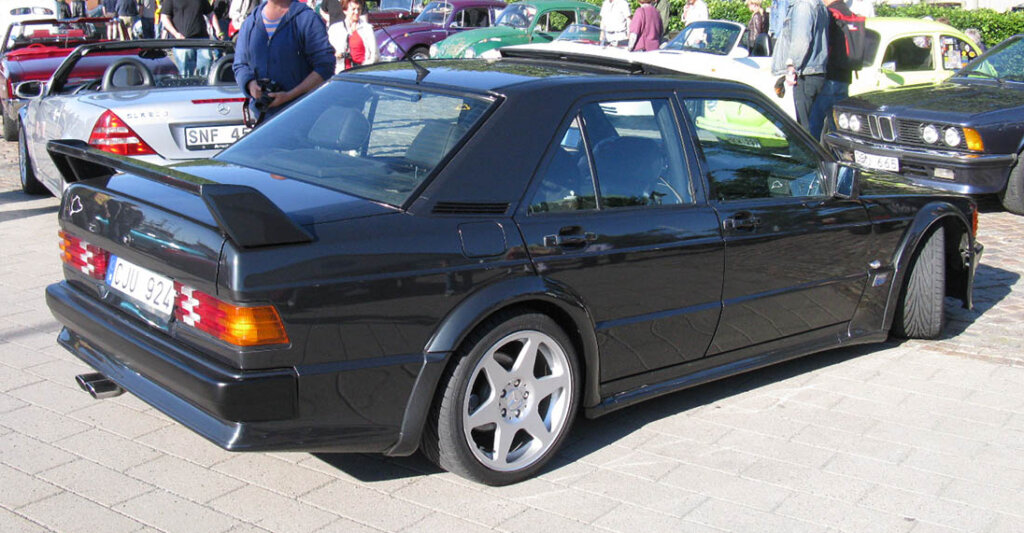
What truly set the Evo I apart was its power plant. Although its power output closely mirrored the “regular” 2.5-16 at 202 horsepower (151 kW; 205 PS), it featured a redesigned engine of similar capacity, with a shorter stroke and larger bore. This critical adjustment facilitated a higher rev limit and more potent power generation. Further refinements extended to the optimization of rotating mass, enhancements in the lubrication system, and fine-tuning of cam timing. Cosworth also assigned the project code “WAC” for the development of this short-stroke Evolution engine.
To cater to performance enthusiasts, only 502 units of the Evolution model were crafted to comply with DTM regulations. For those craving an extra dose of power, an optional PowerPack engineered by AMG was on offer for DM 18,000. This upgrade encompassed enhanced camshafts, a larger diameter throttle body, a more responsive ignition and fuel management system, and improved intake and exhaust systems. These modifications resulted in a substantial power boost of 30 horsepower (22 kW; 30 PS) over the standard configuration, pushing the total output to an impressive 232 horsepower (173 kW; 235 PS).
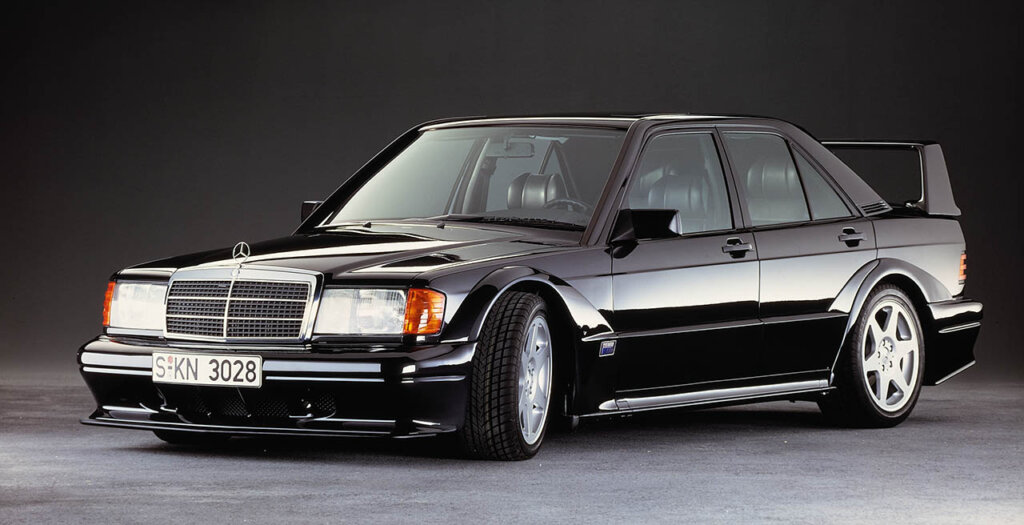
Source: Mercedes-Benz Media Center
| Trim | Production | Engine | Power | Transmission | Drivetrain |
| Evolution II | 1990 – 1991 | 2.5L M102 16V I4 (PowerPack Upgrade) | 232 HP / 235 PS / 173 kW | 4-Speed Manual 5-Speed Manual (Optional) | RWD |
Building on the triumph of its predecessor, the 190 E 2.5-16 Evolution II made its exciting debut in March 1990. The anticipation was so high that the entire production run of 502 units was already sold even before its official unveiling.
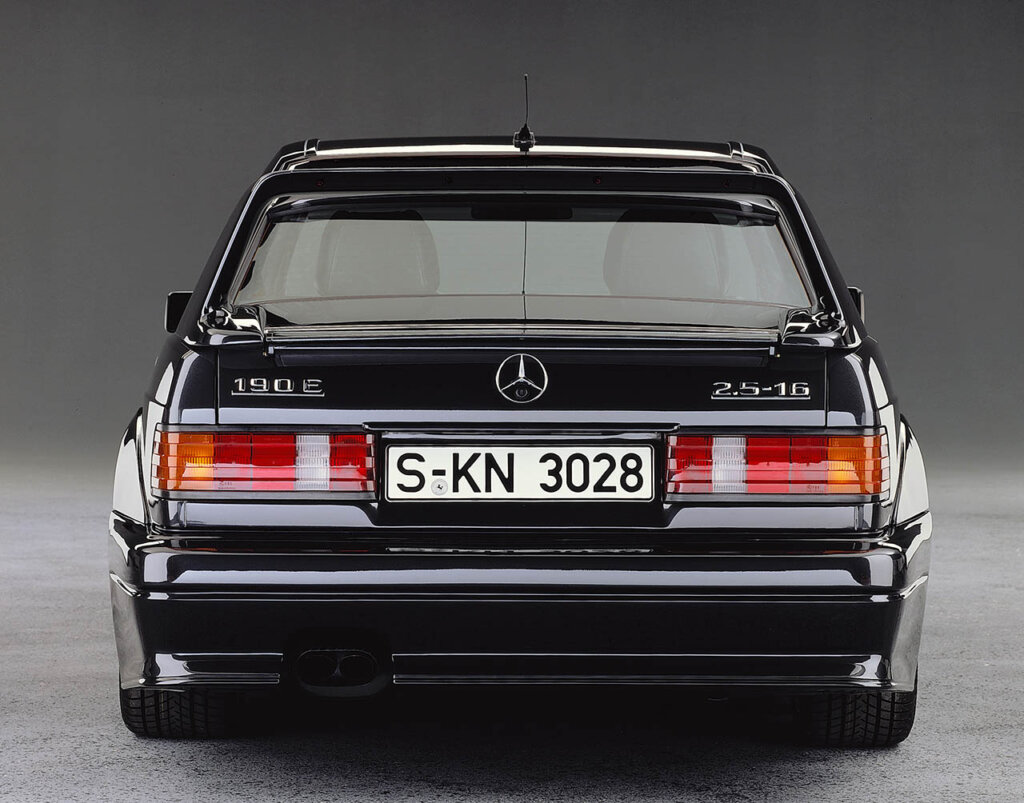
Source: Mercedes-Benz Media Center
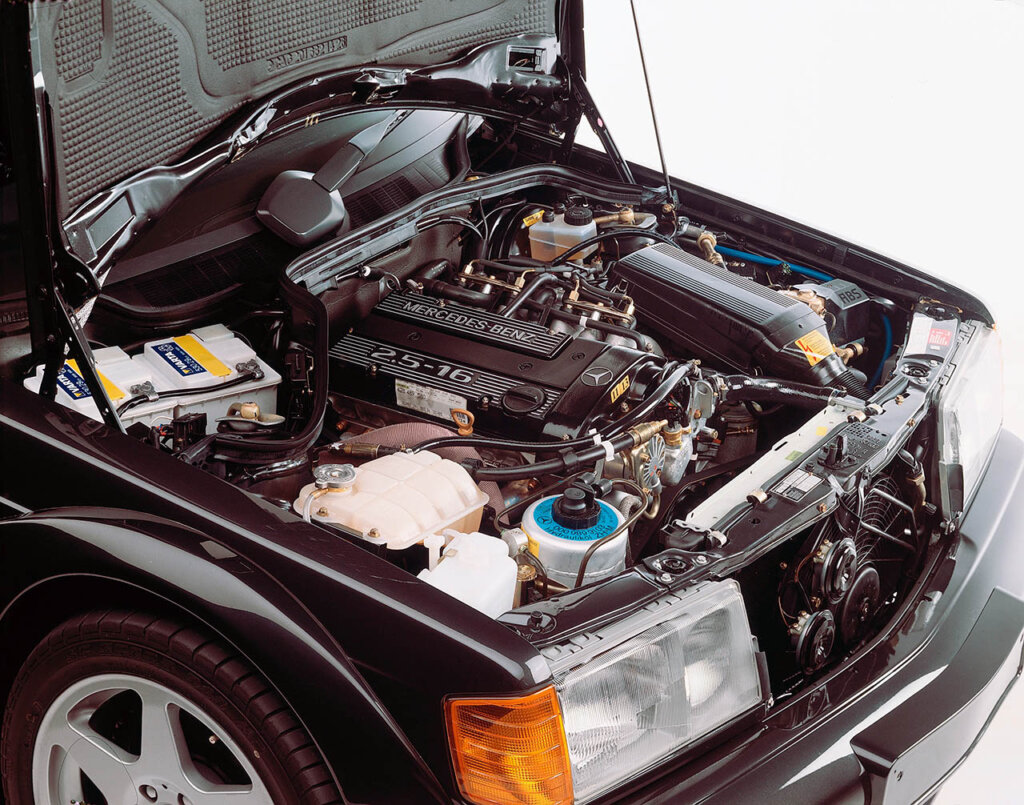
Source: Mercedes-Benz Media Center
The “Evo II” inherited the potent AMG PowerPack, which graced the same short-stroke 2,463 cc (2.5 L) inline-four engine as the Evolution. This powertrain delivered an impressive 232 horsepower (235 PS; 173 kW) at 7,200 rpm and 245 N⋅m (181 lb⋅ft) of torque at 5,000 rpm. Equipped with a full SLS adjustable suspension system, it allowed for effortless ride height adjustments from an interior switch. However, the most conspicuous transformation in the Evolution II was its striking body kit, expertly designed by Prof. Richard Eppler from the University of Stuttgart. This kit featured a substantial adjustable rear wing, a rear window spoiler, and distinctive Evolution II 17-inch alloy wheels. Beyond aesthetics, the kit served a crucial aerodynamic function, having undergone rigorous wind tunnel testing to reduce drag to an impressive 0.29 while simultaneously enhancing downforce. Anecdotal stories even suggest that BMW’s chief of research and development, Wolfgang Reitzle, commented on the aerodynamic prowess of the Evolution II, prompting BMW to reconsider its wind tunnel designs.
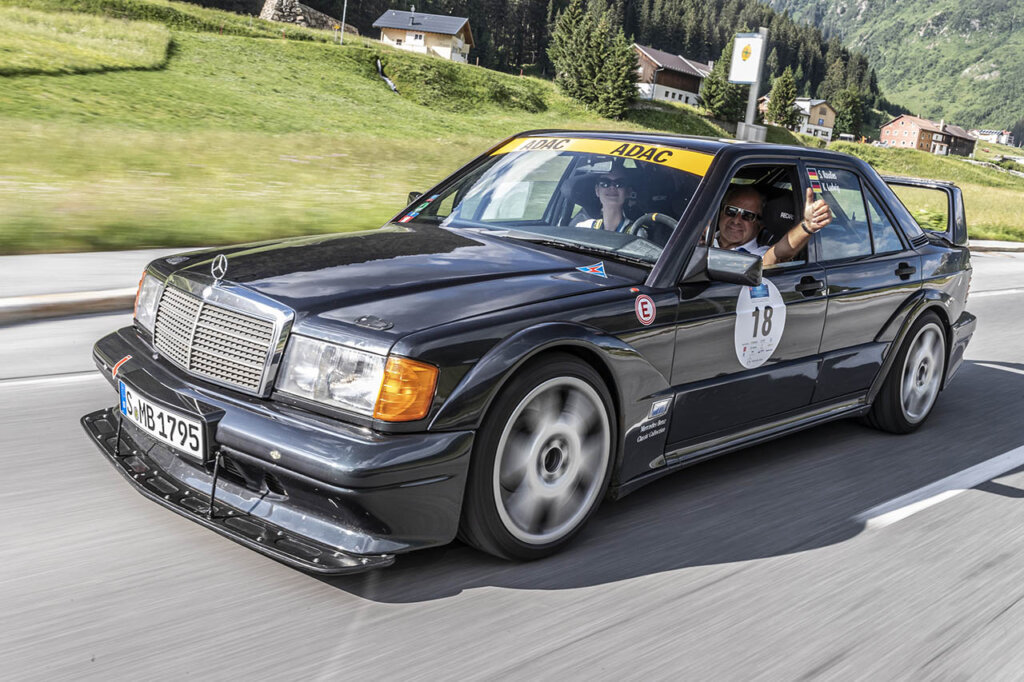
Source: Mercedes-Benz Media Center
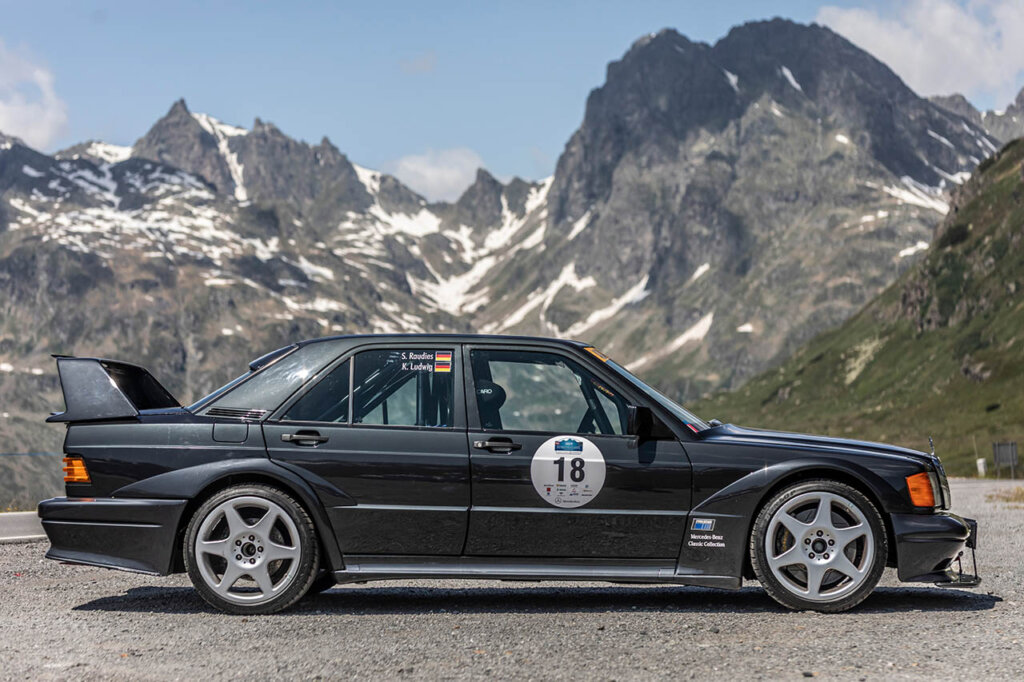
Out of the 502 units produced, 500 were finished in the distinctive “blauschwarz” blue/black metallic hue. However, the final two, numbered 501 and 502, were resplendent in astral silver, making them exceedingly rare among the Evolution models. Unfortunately, the Evolution II holds the distinction of having the shortest production run among the 190 series models, commencing in 1990 and concluding in 1991.
Short, but Legendary Run
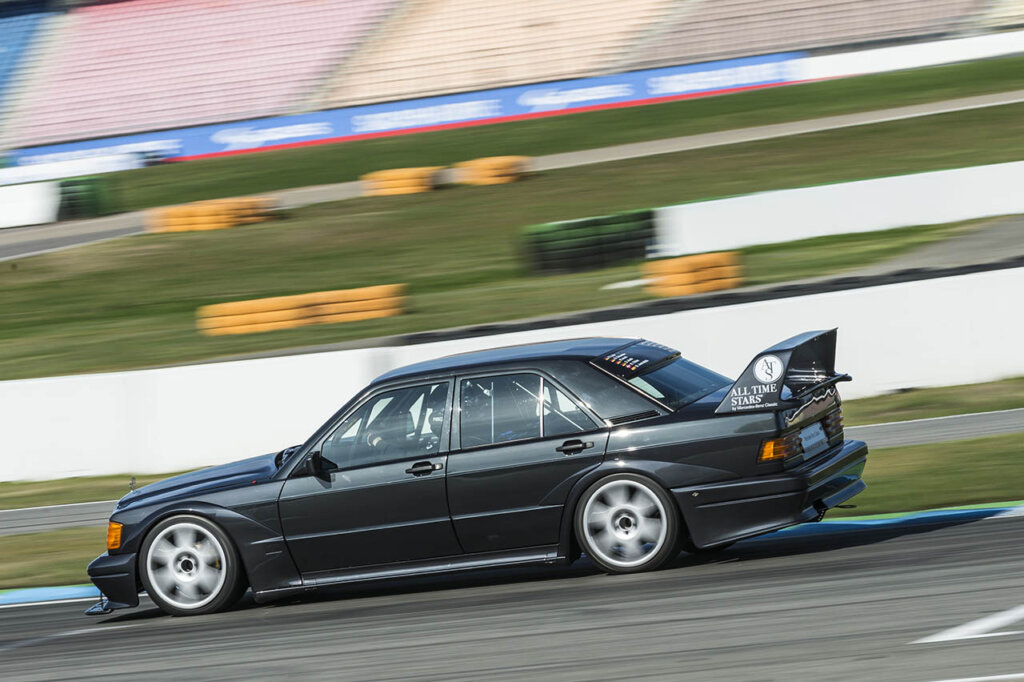
Source: Mercedes-Benz Media Center
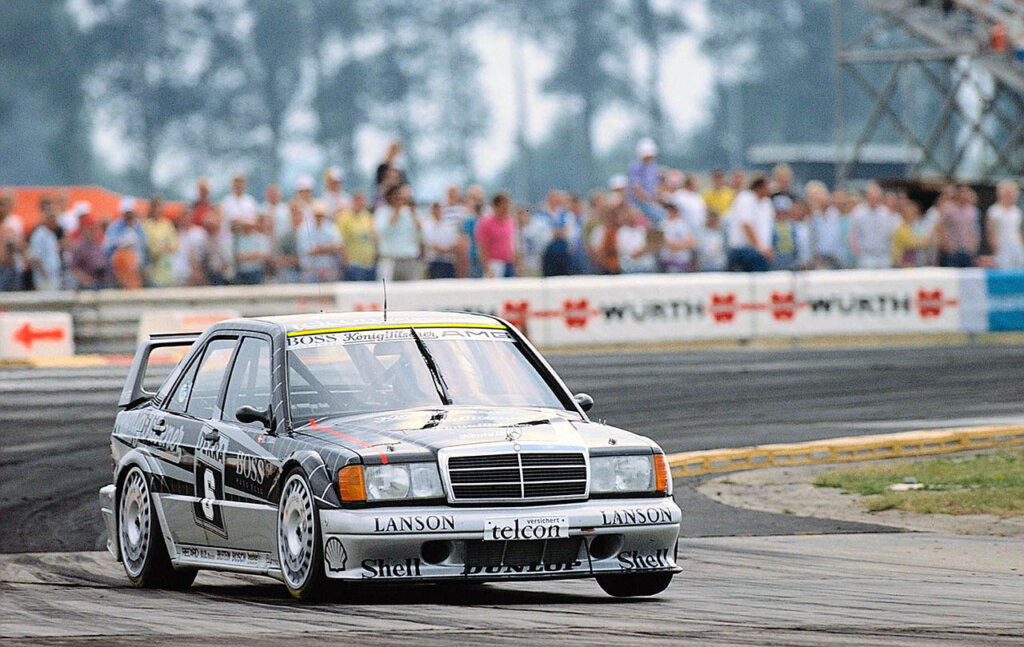
Source: Mercedes-Benz Media Center
From its small beginnings in the world of rallying to its evolution into a high-performance legend, the 190 E 2.5-16 Evolution is a remarkable vehicle that showcased Mercedes-Benz’s unwavering commitment to precision engineering and innovation in the 1990s. Despite its limited production numbers, the technological advancements and captivating body style ensure that the 190 E 2.5-16 Evolution remains an icon in Mercedes-Benz legacy.

